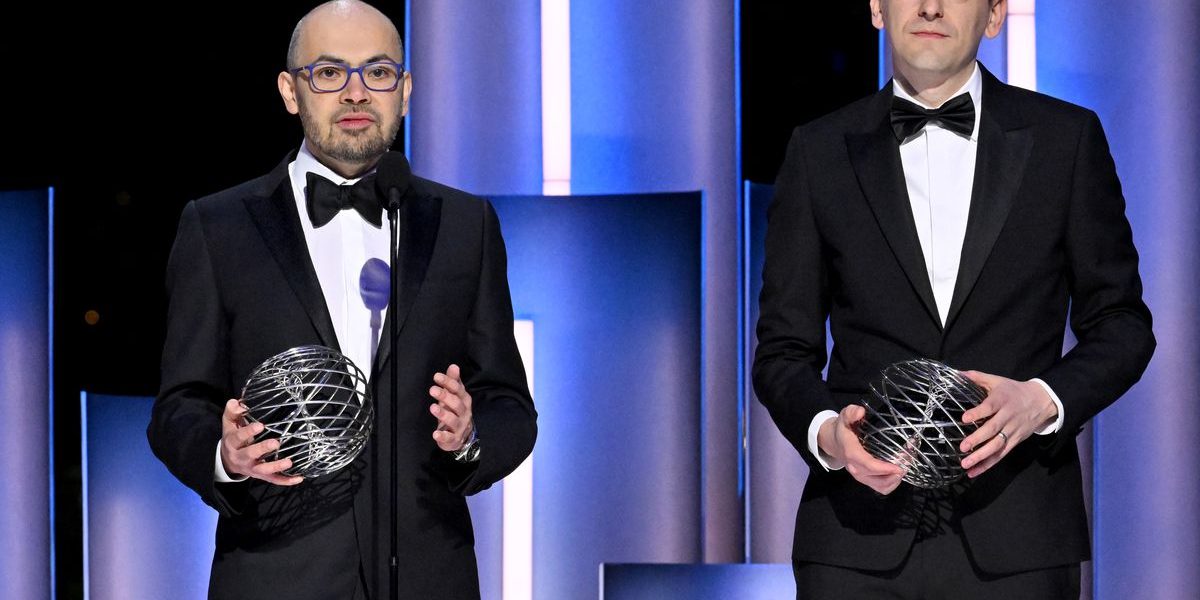The Nobel Prize in chemistry awarded to two founders of machine learning: David Baker, Demis Hassabis, and John Jumper
The cash award of $1 million was left by the inventor of the award. The laureates are invited to receive their awards at ceremonies on Dec. 10, the anniversary of Nobel’s death.
Six days of Nobel announcements opened Monday with Americans Victor Ambros and Gary Ruvkun winning the medicine prize. Two founding fathers of machine learning — John Hopfield and Geoffrey Hinton — won the physics prize.
The chemistryaward went to three scientists who worked on quantum dots, tiny particles just a few nanometers in diameter that can be bright colored light and are used in electronics and medical devices.
“Four years ago in 2020, Demis Hassabis and John Jumper managed to crack the code with skillful use of artificial intelligence. They made it possible to predict the complex structure of essentially any known protein in nature,” Linke said.
The AlphaFold2 model was created by DeepMind CEO Demis Hassabis and senior DeepMind research scientist John Jumper. The committee at the Royal Swedish Academy of Sciences said that they had helped predict the structure of virtually all the 200 million proteins that had been identified.
STOCKHOLM — The Nobel Prize in chemistry was awarded Wednesday to David Baker, Demis Hassabis and John Jumper for their work with proteins, the building blocks of life.
The New York Times stated that the work would be more appropriate for the prize if it was for computer science. “But there isn’t one.” When commended for his comment by the Times, Hinton added that it was “also a hint.”
An Overview of the AlphaFold Project: Predicting Structures of Proteins and their Molecules Using DeepMind and AlphaField Predictions
The impact of AlphaFold, which was unveiled just a few years ago, has been nothing short of transformative. The tool has made protein structures — often, but not always, highly accurate ones — available to researchers at the touch of a button, and enabled experiments that were unimaginable a decade ago. Christine Orengo is a computational Biologist at the University College London, who uses AlphaFold Predicted structures to uncover newProteins.
In 2021 DeepMind made AlphaFold2’s underlying code freely available, along with the data needed to train the model. The structures of almost all the proteins from every single one of the thousands of organisms that have been represented in genetic databases now can be found in the AlphaFold database. This year, the company unveiled a third version of AlphaFold, which can model other molecules that interact with proteins such as drugs.
It was considered impossible to find a way to predict the three-dimensional structure of a multi-functional molecule from knowing their amino acid sequences, as stated by the chair of the committee during the prize announcement. This year’s laureates “have cracked the code”, he added. The three winners share a prize pot of 11 million Swedish kronor (US$1 million).
One team used the tool and experimental data to map the nuclear pore complex, one of our cells’ largest machines that transportsmolecules out of the nucleus. The AlphaFold database was mined by two teams last year to uncover new families of folds and discover surprising connections in the machinery of life.
Although computational tools such as AlphaFold aren’t a replacement for experimental studies, they are an accelerator, scientists say. “This is going to empower a new generation ofMolecular Biologists to ask advanced questions,” said the judge of the CASP, an evolutionary biologist at the Max Planck Institute for Developmental Biology.

